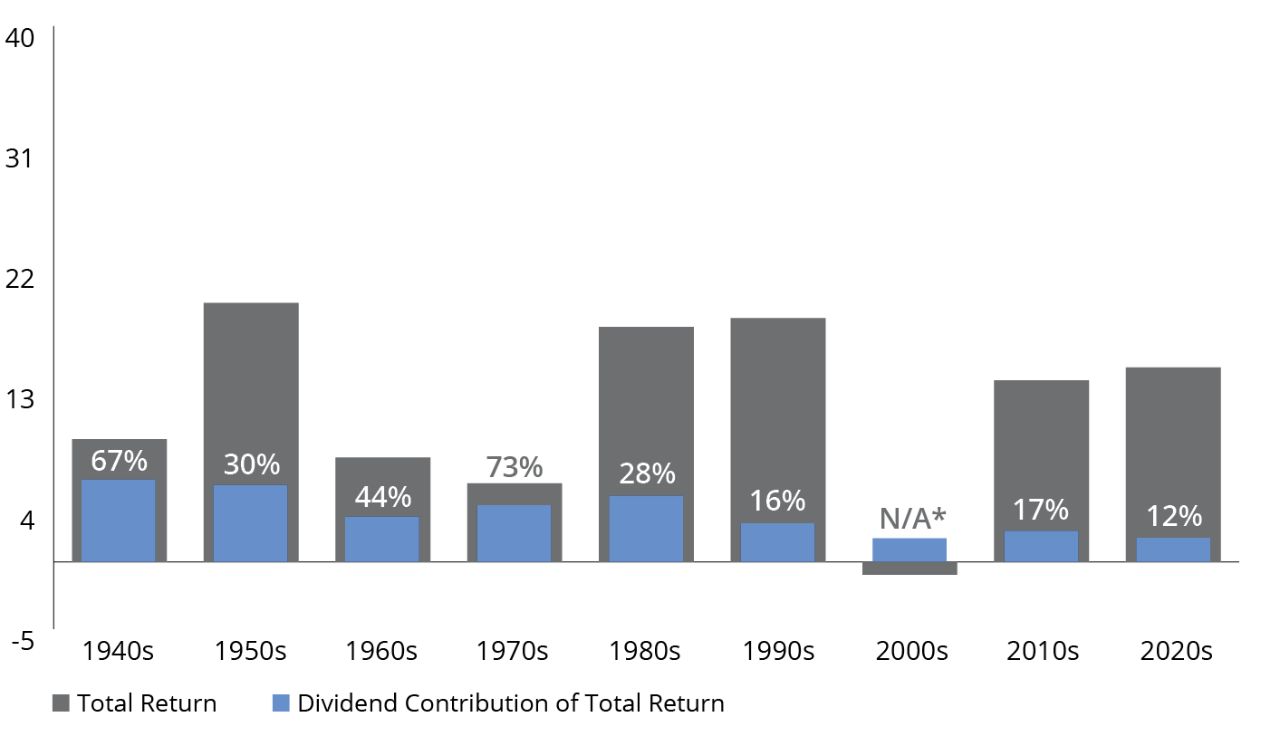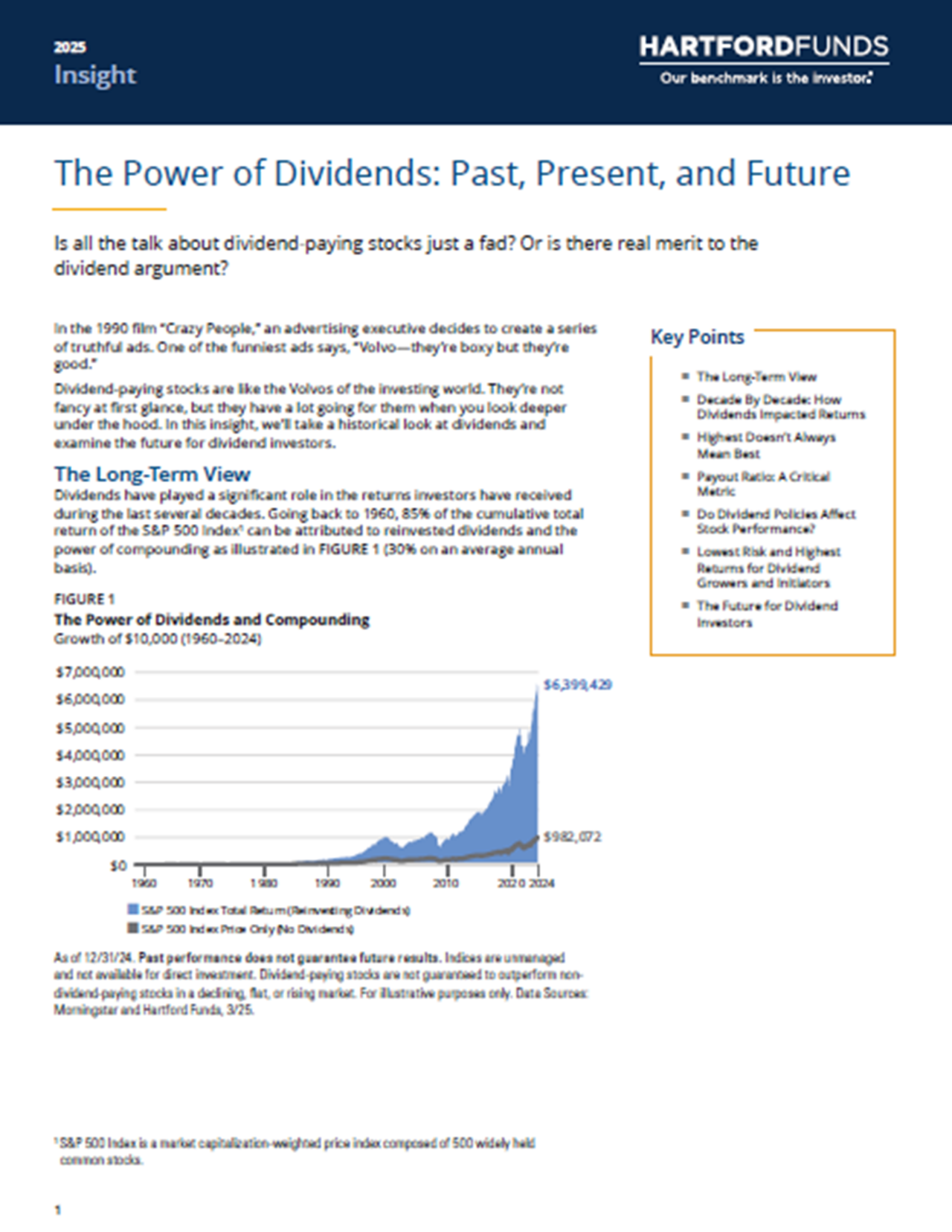But, even though the world of near-zero interest rates ended in March 2022 when the US Federal Reserve (Fed) began hiking short-term rates to tame inflation, dividend-paying stocks may still be worth a closer look. Here are three reasons why:
Reason 1: Income and Growth
Potential
Given the volatile economic environment of 2025—geopolitical tensions, trade wars, recession worries—fixed-income yields may face downward pressure as central banks continue to adjust interest rates. But dividend payments can be an attractive source of income in uncertain times.
Moreover, many dividend-paying companies accumulated near-record amounts of cash reserves in the aftermath of the pandemic as many companies turned their focus to maintaining financial flexibility.2 Even now, there may still be plenty of growth potential for undervalued dividend-paying companies with strong balance sheets and deep cash reserves.
Reason 2: Consistency Has Historically Been Rewarded
Recent research shows that companies that offer steady sustainable dividends without going overboard on payouts have provided the best returns over time.
The study, by Wellington Management,3 divided dividend-paying companies into quintiles, then ranked them from highest to lowest level of payouts. Since 1930, the study found that stocks offering the highest level of dividend payouts performed in line overall with those that pay high, but not the very highest, level of dividends, though they often traded leadership over the decades. That's right: Highest doesn’t always mean best.
This counterintuitive result suggests that some companies were making “excessive” dividend payouts and leaving themselves with less money to invest in future growth, while companies with more moderate payouts were re-investing their earnings and still retaining enough flexibility to pay steady dividends for the long term.
Reason 3: Dividend Growth—A Sign of Good Management
In another recent study, Ned Davis Research4 looked at dividends from the vantage point of corporate behavior. The study asked: Since 1973, what kind of company had the highest returns and lowest volatility over time: Companies that grew their dividends? Companies that cut or eliminated them? Companies that stood pat? Or companies that didn’t pay anything at all?
The results showed that companies that grew or initiated a dividend experienced the highest returns relative to other stocks—with significantly less volatility.
The study also noted a strong correlation between corporations that consistently grow their dividends and those with strong fundamentals, solid business plans, and a deep commitment to their shareholders.
Bottom line: Although they’ve gone in and out of favor throughout the years, dividends can still play an important role in providing income and growth potential, especially in today’s volatile environment.







